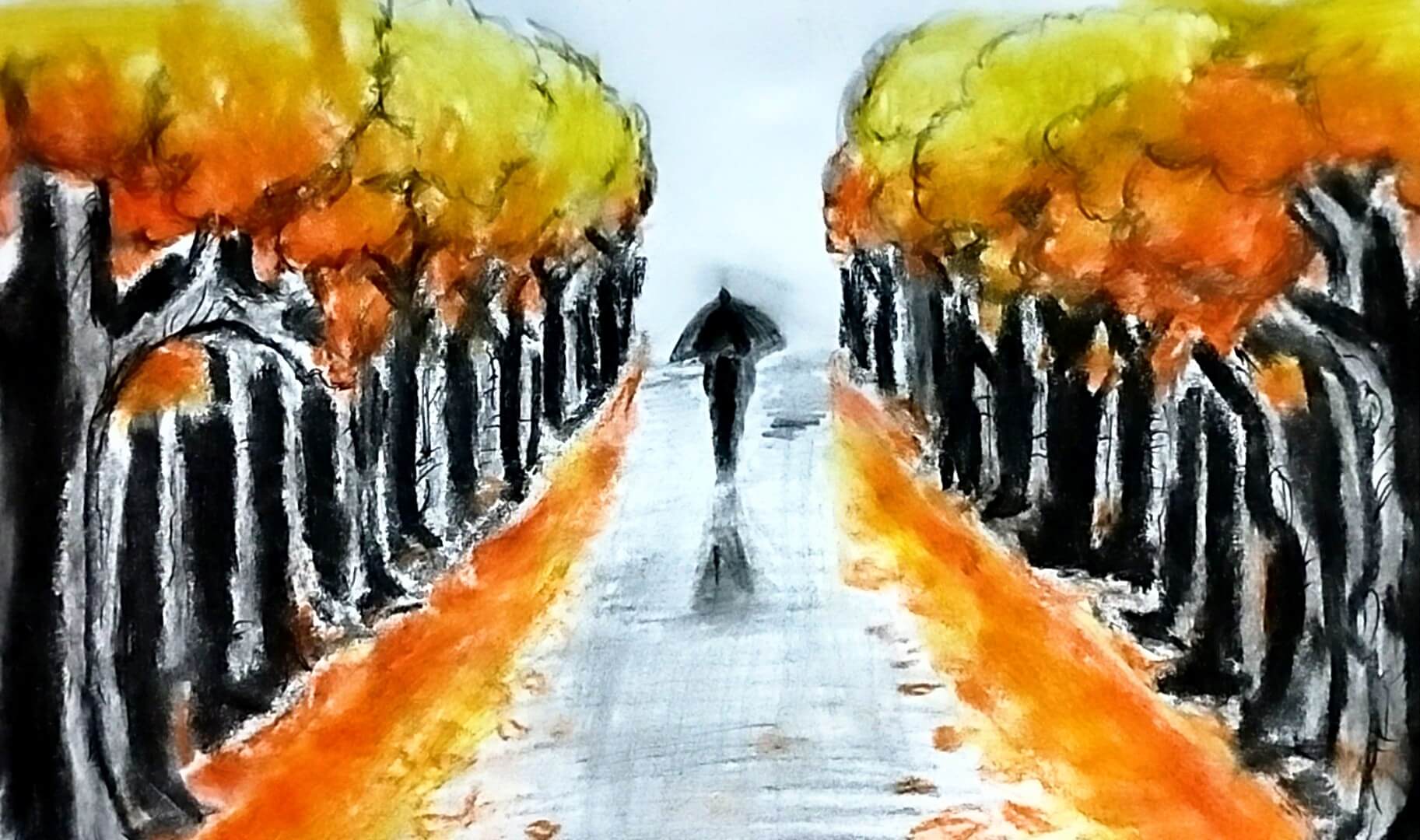Painting landscapes with oils is like capturing nature’s beauty on a canvas, with vibrant hues and intricate details that bring the scenery to life. In this article, we’ll dive into the enchanting world of oil painting, where artists use their brushes to transform blank canvases into breathtaking landscapes filled with depth, texture, and emotion. Join us on a journey through the art of painting landscapes with oils.
The Magic of Oil Paints:
Oil paints have been a favourite medium among artists for centuries, and for good reason. Their slow drying time gives artists ample opportunity to blend and work with colours, creating stunning gradations and intricate details. The rich, pigmented nature of oil paints allows for vibrant hues that remain luminous even after they dry, adding a captivating quality to landscape paintings.

Choosing Your Scene:
Selecting the landscape you wish to paint is the first step on your creative journey. Whether it’s a serene countryside, a majestic mountain range, or a tranquil coastal scene, landscapes offer a wide range of subjects to explore. Consider the mood you want to convey – is it peaceful, dramatic, or perhaps even mysterious? Your choice will guide the colours and techniques you use.
If you are interested in drawing, paintings & beautiful art then see more and explore more drawing or painting techniques with MOBSEAR Gallery
Gathering Your Materials:
Before you begin, ensure you have the necessary materials on hand. You’ll need a set of quality oil paints, brushes of various sizes and shapes, a palette for mixing colours, a canvas or painting surface, and odourless mineral spirits or turpentine for cleaning your brushes. Don’t forget an easel to support your canvas at a comfortable height.
How to Paint Landscapes with Oils: A Beginner’s Guide
Oil painting is a versatile medium that can be used to create beautiful and realistic landscapes. It is a relatively slow-drying medium, which gives you time to blend and layer colours. This makes it ideal for capturing the subtle nuances of light and shadow in a landscape.
If you are a beginner, here are some tips on how to paint landscapes with oils:
- Start with a simple composition. Don’t try to paint too much detail in your first painting. Choose a simple scene with a few basic elements.
- Block in the major shapes. Use large brushes to block in the basic shapes of the landscape. This will help you to establish the overall composition of your painting.
- Add color. Start adding colour to your painting, beginning with the lightest colours and working your way to the darkest colours.
- Blend and layer the colours. Oil paint is very forgiving, so don’t be afraid to blend and layer the colours. This will help you to create smooth transitions between colours.
- Add details. Once you are happy with the overall colour scheme, you can start adding details to your painting. This could include things like trees, flowers, or water.
Here are some important tips for painting landscapes with oils:
- Use a variety of brushes. Different brushes will give you different effects, so it is helpful to have a variety on hand.
- Experiment with different techniques. There are many different techniques that can be used to paint landscapes with oils. Experiment with different techniques to find the ones that work best for you.
- Don’t be afraid to make mistakes. Oil paint is forgiving, so don’t be afraid to make mistakes. Just keep practicing and you will eventually get the hang of it.
You can also check out Landscapes Street Painting With Oils on YouTube.
Creating Depth and Perspective:
Creating a sense of depth and perspective is essential in landscape painting. Use techniques like aerial perspective, where distant objects are lighter and less detailed, to give your painting a three-dimensional quality. Gradually layering colours and adjusting their intensity will help you achieve this effect and make your landscape feel more realistic.
Playing with Color and Light:
Colour and light play a significant role in landscape painting. The changing colours of the sky during different times of the day and the way light interacts with different surfaces all contribute to the mood of your artwork. Experiment with warm and cool colour combinations to capture the essence of a sunset or the coolness of a shaded forest.
Here are some additional points for painting landscapes with oils:
- Start with a simple composition. Don’t try to paint too much detail in your first painting.
- Use reference photos. This can help you to get the proportions and colours right.
- Don’t be afraid to experiment. Oil paints are a forgiving medium, so don’t be afraid to try new things.
- Have fun! Painting landscapes with oils can be a very rewarding experience.
Texture and Detail:
Adding texture and detail to your landscape painting can elevate it to a whole new level. Use different brush strokes and palette knife techniques to mimic the textures of trees, rocks, water, and other elements in your scene. Texture adds visual interest and depth, inviting viewers to explore your painting up close.
Embrace Mistakes and Experiment:
Remember that art is a journey of self-expression and experimentation. Don’t be afraid to make mistakes – they can lead to unexpected discoveries. Use your artistic intuition to guide your decisions, and allow your creativity to flow freely. Over time, you’ll develop your unique style and approach to painting landscapes with oils.
Conclusion:
Painting landscapes with oils is an immersive and rewarding experience that allows artists to capture the beauty of nature and their creative vision. With the versatility of oil paints, you can convey a wide range of emotions and atmospheres in your artwork. So, pick up your brushes, let the colours flow, and embark on a journey of artistic expression as you bring the beauty of landscapes to life on canvas.

